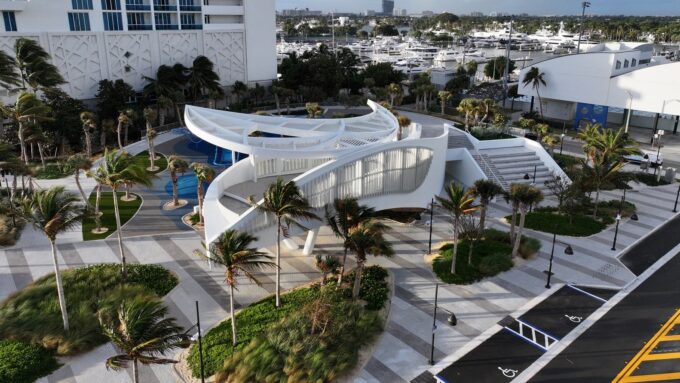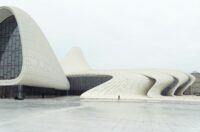- Home
- Articles
- Architectural Portfolio
- Architectral Presentation
- Inspirational Stories
- Architecture News
- Visualization
- BIM Industry
- Facade Design
- Parametric Design
- Career
- Landscape Architecture
- Construction
- Artificial Intelligence
- Sketching
- Design Softwares
- Diagrams
- Writing
- Architectural Tips
- Sustainability
- Courses
- Concept
- Technology
- History & Heritage
- Future of Architecture
- Guides & How-To
- Art & Culture
- Projects
- Interior Design
- Competitions
- Jobs
- Store
- Tools
- More
- Home
- Articles
- Architectural Portfolio
- Architectral Presentation
- Inspirational Stories
- Architecture News
- Visualization
- BIM Industry
- Facade Design
- Parametric Design
- Career
- Landscape Architecture
- Construction
- Artificial Intelligence
- Sketching
- Design Softwares
- Diagrams
- Writing
- Architectural Tips
- Sustainability
- Courses
- Concept
- Technology
- History & Heritage
- Future of Architecture
- Guides & How-To
- Art & Culture
- Projects
- Interior Design
- Competitions
- Jobs
- Store
- Tools
- More
Unlocking Urban Resilience: The Importance of Water Sensitive Design for Sustainable Cities
Explore the transformative potential of water-sensitive design (WSD) in urban planning. This article delves into sustainable water management tactics like rainwater harvesting and green roofs, emphasizing their role in enhancing resilience against climate change.

Water-sensitive design is transforming the way we think about our urban environments. As we face increasing challenges like climate change and population growth, it’s crucial to integrate sustainable water management into our planning. By prioritizing the natural water cycle, we can create resilient landscapes that benefit both people and ecosystems.
In this article, we’ll explore the principles of water-sensitive design and its impact on urban planning. From reducing runoff to enhancing biodiversity, these strategies not only improve water quality but also elevate the livability of our cities. Join us as we dive into innovative approaches that can change the way we interact with water in our built environments.

Table of Contents
ToggleOverview of Water Sensitive Design
Water-sensitive design integrates sustainable water management principles into urban landscapes. This approach prioritizes the natural water cycle, thereby enhancing resilience against climate change and urbanization pressures.

- Rainwater Harvesting: Rainwater collection systems reduce dependency on potable water sources. These systems capture runoff for irrigation and other non-potable uses.
- Permeable Pavements: Permeable surfaces allow water to infiltrate the ground, reducing runoff volume. This method helps recharge groundwater and mitigate flooding during heavy rains.
- Green Roofs: Green roofs absorb rainwater and provide insulation. They contribute to urban cooling and offer habitats for various species.
- Constructed Wetlands: These engineered systems treat stormwater naturally. They filter pollutants, enhancing water quality while promoting biodiversity.
- Bioswales: Landscape features designed to manage stormwater runoff. Bioswales direct water through vegetation, which absorbs and filters it.
- Urban Forests: Increasing tree canopy coverage helps manage stormwater. Trees intercept precipitation, enhancing evapotranspiration and reducing urban heat.
Implementing these strategies fosters an environment that supports human health and ecological functions, ultimately creating livable urban areas. We can promote innovative designs that effectively manage water, improve biodiversity, and enhance community resilience.
Principles of Water Sensitive Design
Water sensitive design embodies strategies aimed at sustainable and effective water management in urban environments. We focus on principles that ensure water integrates harmoniously within the landscape.

Sustainable Water Management
Sustainable water management incorporates methods that prioritize the preservation and enhancement of the natural water cycle. We emphasize techniques such as:
- Rainwater Harvesting: Collecting rainwater from surfaces like roofs provides a valuable resource for irrigation and non-potable uses.
- Permeable Pavements: These surfaces allow water to infiltrate, reducing runoff and mitigating flooding while recharging groundwater.
- Green Roofs: Vegetated roofs absorb rainfall, reduce heat, and improve biodiversity within urban settings.
- Constructed Wetlands: Engineered systems mimic natural wetlands, treating stormwater and providing habitats for wildlife.
- Bioswales: Landscaped channels with vegetation help manage stormwater runoff and filter pollutants.
- Urban Forests: Trees and green spaces support stormwater absorption, improve air quality, and enhance city aesthetics.
Employing these strategies contributes to efficient stormwater management, reduced flooding, and improved water quality, fostering resilience in urban areas.
Integration with Urban Planning
Integration with urban planning ensures that water-sensitive design principles align with the broader goals of community development. We advocate for:
- Holistic Design Approaches: Incorporating water management into the overall design of neighborhoods, parks, and public spaces promotes a cohesive environmental strategy.
- Collaboration Among Stakeholders: Engaging city planners, architects, and local communities facilitates innovative solutions that reflect diverse needs and priorities.
- Policy Development: Establishing regulations that support water-sensitive strategies ensures sustainable practices are embedded in urban growth.
- Community Education: Raising awareness about water-sensitive design encourages residents to participate in and support sustainable initiatives.
By aligning water management strategies with urban planning, communities enhance livability, mitigate environmental impacts, and ensure the sustainable use of water resources.
Benefits of Water Sensitive Design
Water-sensitive design (WSD) offers numerous benefits that extend beyond immediate project outcomes. By addressing environmental, social, and economic aspects, WSD enhances urban resilience and supports community well-being.

Environmental Impact
WSD significantly reduces stormwater runoff, promoting groundwater recharge and protecting local waterways. Techniques like permeable pavements and green roofs optimize water retention and filtration. Biodiversity thrives in environments designed with WSD principles, as habitats like constructed wetlands and bioswales support diverse flora and fauna. By enhancing water quality through natural processes, WSD mitigates pollution and improves ecosystem health, ultimately fostering sustainability in urban landscapes.
Social and Economic Advantages
WSD enhances quality of life within communities by providing recreational spaces and improving aesthetic appeal. Access to green infrastructure encourages physical activity and mental well-being. Economic benefits arise from increased property values linked to well-designed urban landscapes. Additionally, reducing reliance on traditional water supply systems decreases costs and promotes sustainable water use practices. Engaging the community in WSD initiatives fosters ownership and stewardship, enhancing social bonds and collective responsibility for local environmental health.
Case Studies in Water Sensitive Design
Water-sensitive design (WSD) demonstrates its effectiveness through various successful implementations and teaches valuable lessons for future projects.

Successful Implementations
- Portland, Oregon: Portland’s Green Streets Program integrates bioswales and permeable pavements to manage stormwater runoff effectively. The city has observed a 30% reduction in runoff, significantly improving local water quality.
- Melbourne, Australia: Melbourne’s WSUD framework incorporates rainwater harvesting systems in new developments. This approach has contributed to a 25% decrease in mains water use across residential areas, promoting sustainable water consumption.
- Singapore: The Marina Barrage serves as a tidal barrier and incorporates green roofs and rain gardens. This multifunctional design enhances urban aesthetics and provides recreational spaces while managing flood risks effectively.
- Copenhagen, Denmark: Through its Cloudburst Management Plan, Copenhagen incorporates green infrastructure to address stormwater challenges. The city repurposed streets into vibrant public spaces, reducing flooding and enhancing community engagement.
Lessons Learned
- Collaboration is Key: Successful projects emphasize collaboration among stakeholders including local governments, community members, and environmental organizations, fostering shared vision and objectives.
- Adaptation to Local Context: Tailoring designs to local climatic and geographic conditions enhances long-term viability. Understanding local water cycles and ecology leads to more effective WSD solutions.
- Community Involvement: Engaging communities in the design and implementation phases increases project success. Education and participatory initiatives encourage stewardship and a sense of ownership among residents.
- Long-term Planning: WSD requires a forward-thinking approach, implementing designs that consider future growth and climate projections. Short-sighted planning can undermine project sustainability.
- Monitoring and Evaluation: Regular assessment of implemented practices ensures that goals are being met and provides insights for ongoing improvements. Adaptive management strategies lead to more resilient urban environments.
Challenges and Considerations
Implementing water-sensitive design (WSD) presents various challenges and considerations that require careful navigation. Understanding these barriers and anticipating future trends helps us adapt our approaches and enhance effectiveness.

Barriers to Adoption
We face several barriers to the adoption of WSD strategies. These barriers include:
- Insufficient Funding: Limited financial resources often hinder the implementation of innovative water management practices.
- Regulatory Constraints: Existing regulations may not align with WSD principles, complicating approval processes for new designs.
- Stakeholder Resistance: Some stakeholders may resist changes to traditional water management practices due to perceived risks or lack of awareness about benefits.
- Knowledge Gaps: A lack of expertise in WSD can lead to misinterpretation of strategies and ineffective application in projects.
- Maintenance Issues: Concerns about the long-term maintenance and operational costs of WSD infrastructure may deter investment.
Addressing these barriers requires collaboration among stakeholders, education, and policy reforms that support sustainable initiatives.
Future Trends in Water Sensitive Design
Anticipating future trends in WSD enhances our capacity for innovative solutions. Emerging trends include:
- Green Infrastructure Expansion: The increased adoption of green infrastructure projects, such as green roofs and urban forests, aims to enhance ecosystem services.
- Smart Technology Integration: We incorporate smart technologies to monitor water use and manage resources efficiently, improving responsiveness to environmental changes.
- Community-Centric Designs: More projects are focusing on community engagement to align design with local needs and preferences, fostering greater ownership and stewardship.
- Data-Driven Decision Making: Relying on data analytics for assessing water flows and community impacts leads to more informed and effective WSD strategies.
- Resilience Planning: Emphasizing resilience in urban planning considers climate variability and population pressures, ensuring sustainable water management in the future.
By staying attuned to these barriers and trends, we can proactively shape the evolution of water-sensitive design, supporting urban resilience and sustainability.
Conclusion
Water-sensitive design (WSD) plays a crucial role in addressing the growing challenges of urban environments. It incorporates sustainable water management practices that help restore the natural water cycle. By implementing strategies like rainwater harvesting, permeable pavements, and green roofs, we significantly reduce stormwater runoff, enhance biodiversity, and improve water quality.
Integrating WSD into urban planning promotes holistic approaches that align with community development goals. Successful implementation involves collaboration among stakeholders and community education, ensuring everyone understands the importance of sustainable practices.
We observe numerous benefits arising from WSD, including environmental, social, and economic advantages. These benefits manifest through increased property values, improved recreational spaces, and better ecosystem health. Engaging the community fosters ownership and responsibility toward local environmental health.
Case studies from cities like Portland, Melbourne, Singapore, and Copenhagen highlight the effectiveness of WSD strategies. Lessons learned stress the importance of local context adaptation, long-term planning, and active community involvement.
Despite existing challenges such as funding and regulatory constraints, we can overcome these barriers by focusing on education, collaboration, and policy reform. Future trends emphasize expanding green infrastructure and integrating smart technologies, making it possible to shape our urban landscapes for increased resilience and sustainability.
- city sustainability
- city water strategy
- climate adaptive cities
- eco-friendly urban design
- green infrastructure
- integrated water management
- resilient urban planning
- sustainable cities
- sustainable urban development
- urban resilience
- urban water conservation
- urban water efficiency
- urban water solutions
- water management
- water sensitive design
I create and manage digital content for architecture-focused platforms, specializing in blog writing, short-form video editing, visual content production, and social media coordination. With a strong background in project and team management, I bring structure and creativity to every stage of content production. My skills in marketing, visual design, and strategic planning enable me to deliver impactful, brand-aligned results.
2 Comments
Submit your architectural projects
Follow these steps for submission your project. Submission FormLatest Posts
Architecture as Infrastructure: Designing Beyond Buildings
Architecture as infrastructure reframes cities as systems—flows, lifecycles, and value. Explore resilient...
Designing for Emotional Urbanism: How We Shape Cities People Actually Feel Good In
Emotional Urbanism: a practical guide to design that reduces stress, boosts dwell...
How Urban Design Evolves Like Nature
How urban design evolves like nature: a practical guide to adaptive cities...
Why Walkable Cities Make Us Happier: Science, Design, and Daily Joy
Walkable cities make us happier: less stress, built-in exercise, stronger community. Explore...












There is definately a lot to find out about this subject. I like all the points you made
I am truly thankful to the owner of this web site who has shared this fantastic piece of writing at at this place.